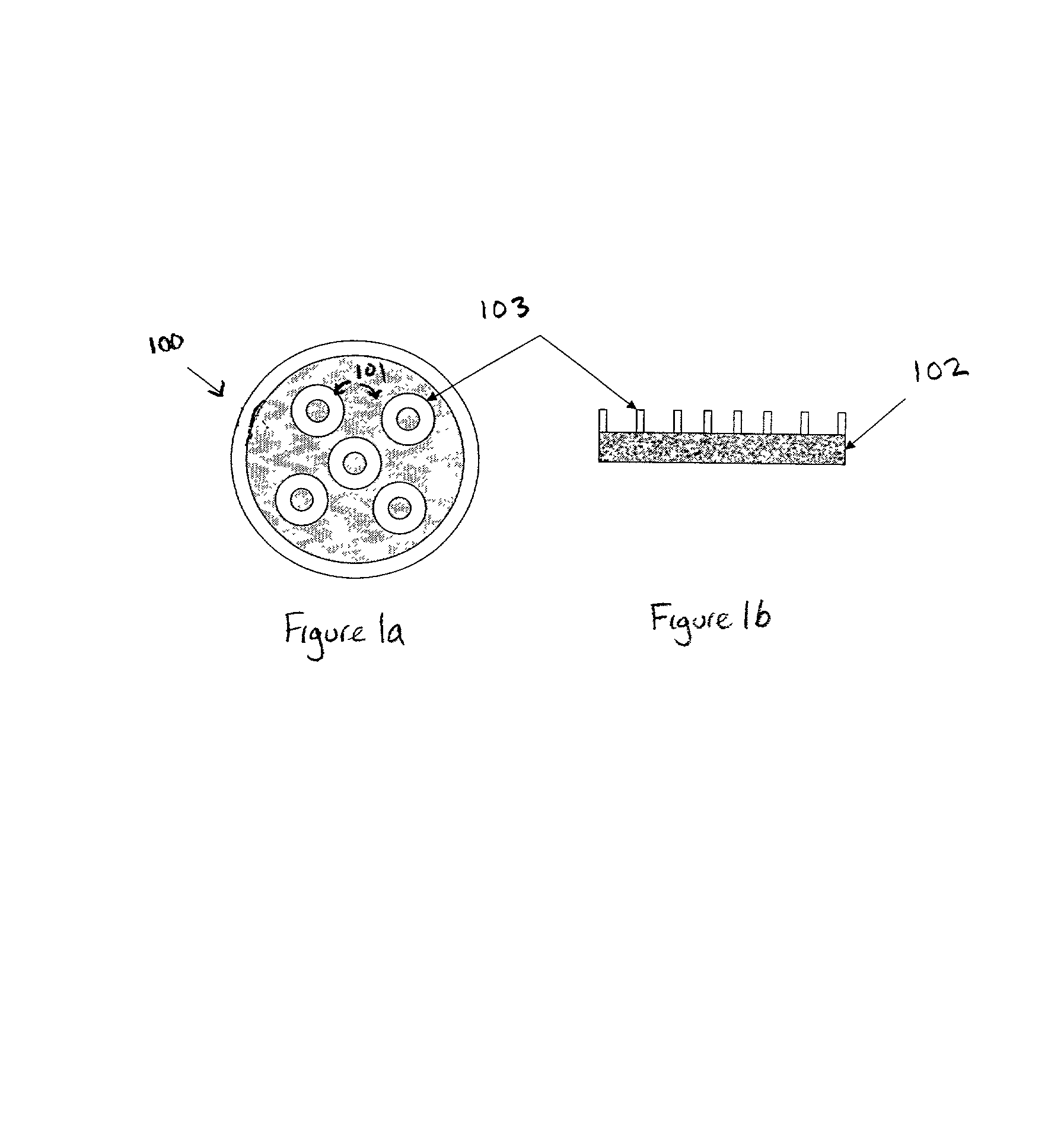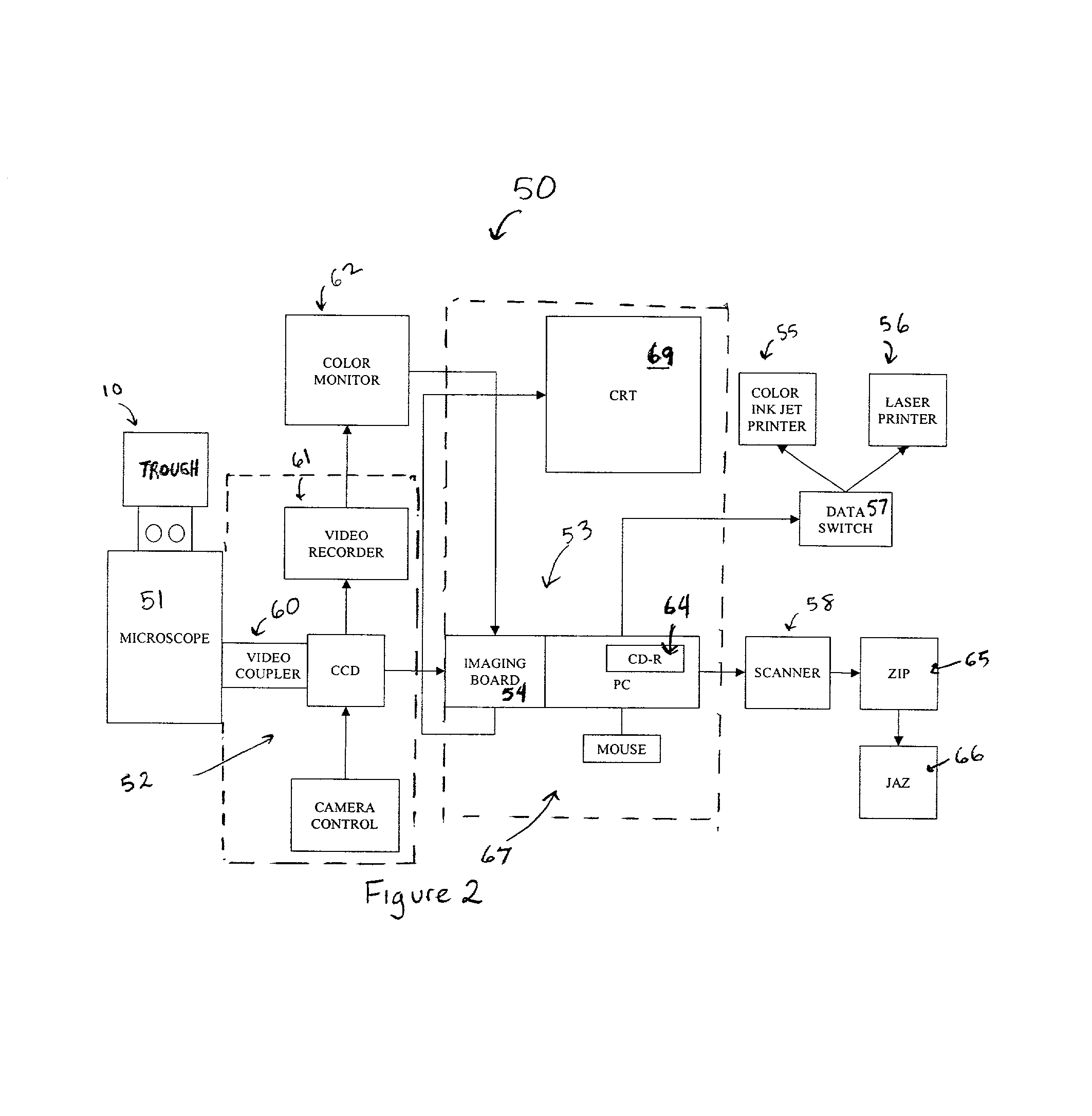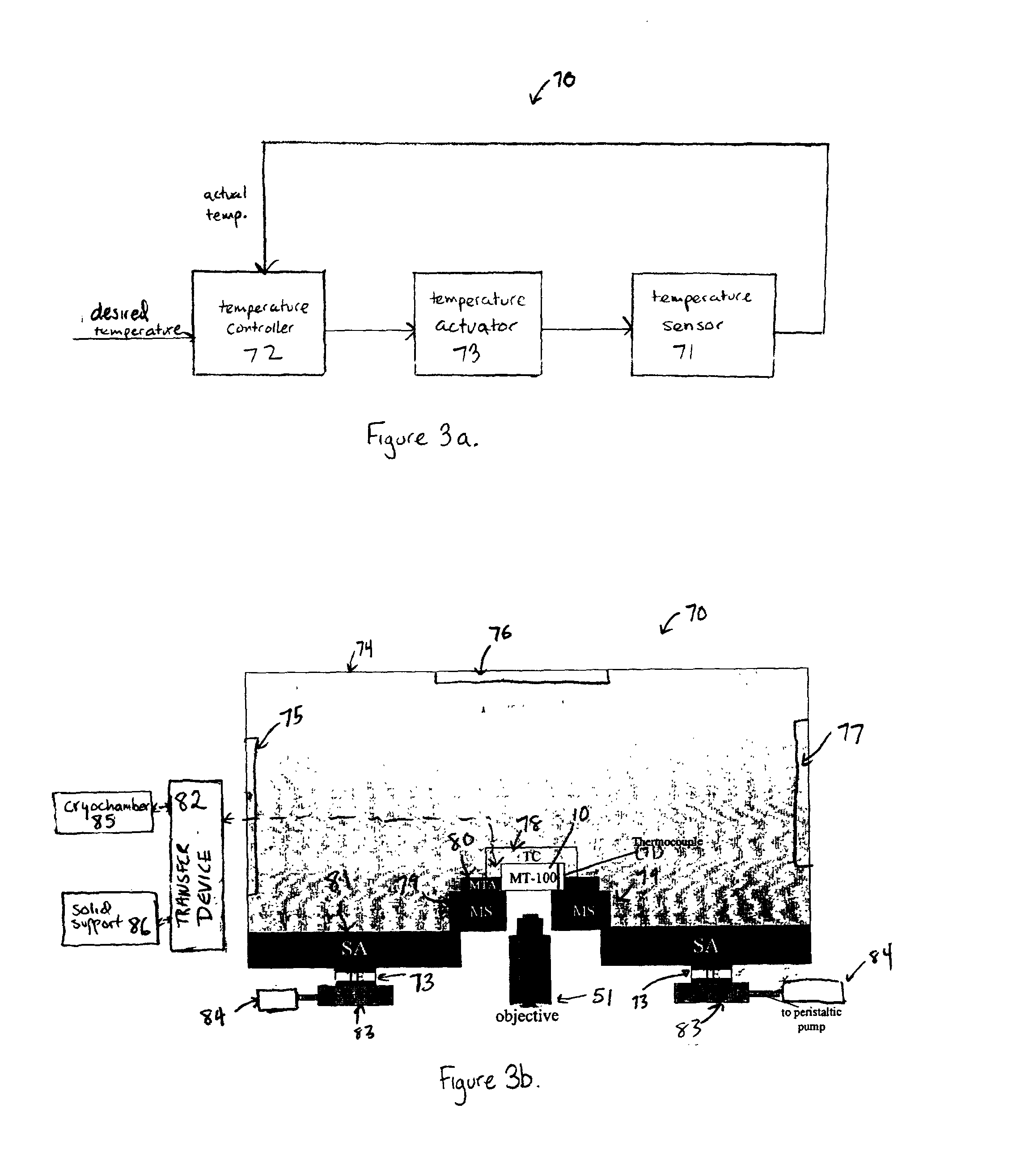Ordered two-and three-dimensional structures of amphiphilic molecules
- Summary
- Abstract
- Description
- Claims
- Application Information
AI Technical Summary
Benefits of technology
Problems solved by technology
Method used
Image
Examples
example 1
Direct Visual Evidence for the Formation of Ordered Structures, e.g., Large Ordered Domains, of a Membrane Proteins at an Air-Aqueous Interface
[0159]In this example, a unique ability to grow ordered structures of a membrane protein on a liquid in a fast and controlled fashion is demonstrated. The membrane protein cytochrome c oxidase (COX) from beef heart was chosen as a model membrane protein to elucidate the feasibility of the technique. The structure of COX has been extensively studied in different laboratories. The structure of the metal sites of COX was determined to 2.8 Å resolution by x-ray analysis (Tsukihara, T., et al. Science 269, 1069-74 (1995)). Crystal structure information at intermediate resolutions is available of tetragonal or hexagonal bipyramidal crystals that diffract x-rays to 5 Å (Shinzawa-Itoh, K., et al. J. Mol. Biol. 246, 572-575 (1995)) and 8 Å (Yoshikawa, S. et al. PNAS, 85, 1354-1358 (1988); Yoshikawa, S., et al. J. Crystal Growth, 122, 298-302 (1992)) r...
example 2
Electron Microscopy and Electron Diffraction of Ordered Domains Prepared at an Air-aqueous Interface
[0182]Ordered structures of the protein COX were formed at an air-aqueous interface for structure analysis by electron crystallography. The ordered structures were transferred to hydrophobic (carbon-coated) or hydrophilic (silicon oxide coated) grids. Two different types of specimen preparations were used for comparative analysis. In certain specimens, a complex was made between the protein, B-CC and FITC-SA. However, these probes were excluded in a majority of specimen preparations in order to eliminate the effect of bound ligands on the structure of the protein. In all specimen ordered structures, the lipids were probed with the fluorescently tagged lipid R-PE. Inclusion of the lipid probe facilitated visual monitoring of the ordered structure during its transfer to the grids. The electron microscope studies reported here were done on unstained specimen, at room temperature (22±2° C...
example 3
Direct Visual Evidence for Formation of Ordered Two-dimensional Ordered Structures of the Multidrug Resistance P-glycoprotein
[0190]In another system, comprised of the multidrug resistance P-glycoprotein (P-gp), the formation of large ordered domains of the protein in its natural membrane was demonstrated. Non-random distribution of cell surface P-glycoprotein (P-gp) in monolayers spread from multidrug resistant MCF-7 AdrR and MCF-7 sensitive cell lines was shown. Cell membrane vesicles were prepared according to the method of Cornwell et al. (J. Biol. Chem. 261, 7921-28 (1986)). Monolayers were spread from vesicles in a hypertonic buffer including a high concentration of sucrose. The vesicles were spread at the air-aqueous buffer interface of the Micro-Trough MT-100, on a hypotonic buffer in the same manner as it was discussed earlier for COX. Spreading of the monolayer was monitored by observing an increase in the surface pressure of the spread film at a constant area. P-gp was pro...
PUM
| Property | Measurement | Unit |
|---|---|---|
| Area | aaaaa | aaaaa |
| Kinematic viscosity | aaaaa | aaaaa |
| Surface energy | aaaaa | aaaaa |
Abstract
Description
Claims
Application Information
 Login to View More
Login to View More - R&D
- Intellectual Property
- Life Sciences
- Materials
- Tech Scout
- Unparalleled Data Quality
- Higher Quality Content
- 60% Fewer Hallucinations
Browse by: Latest US Patents, China's latest patents, Technical Efficacy Thesaurus, Application Domain, Technology Topic, Popular Technical Reports.
© 2025 PatSnap. All rights reserved.Legal|Privacy policy|Modern Slavery Act Transparency Statement|Sitemap|About US| Contact US: help@patsnap.com



